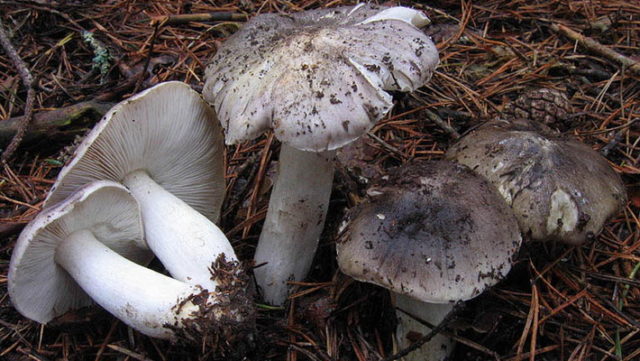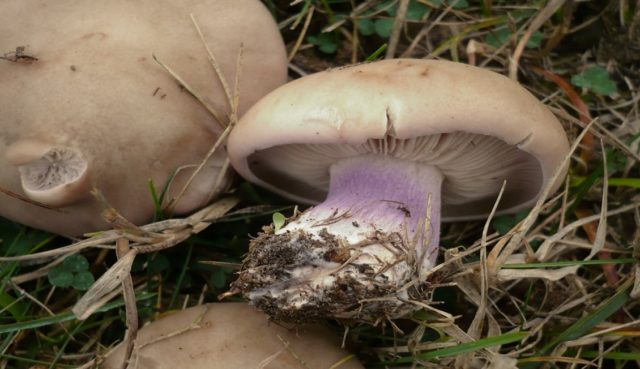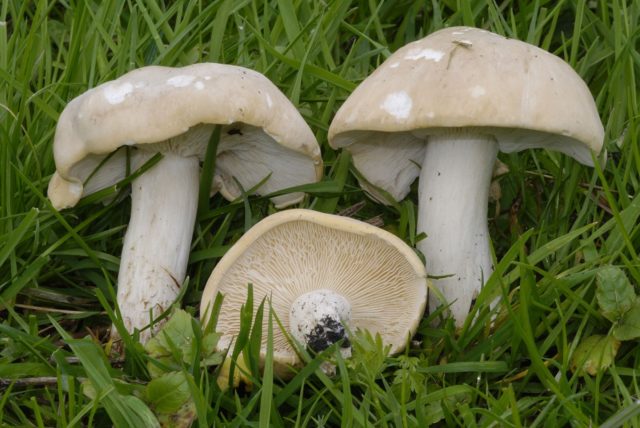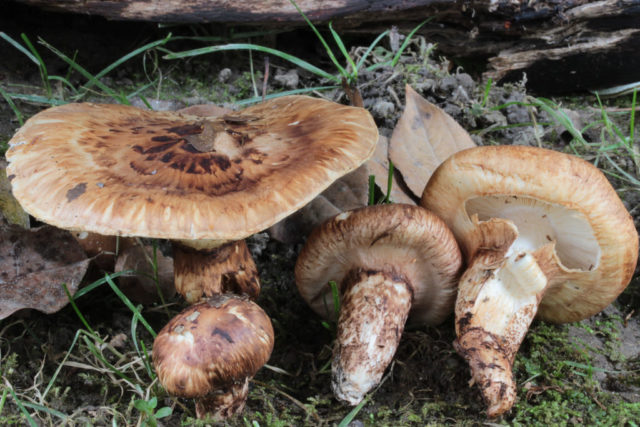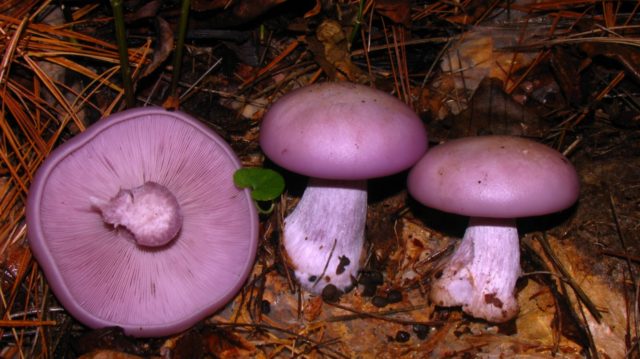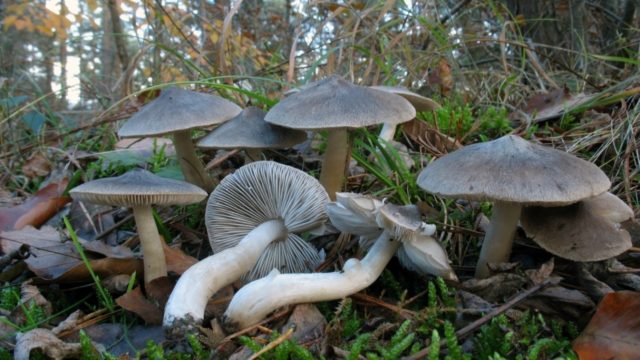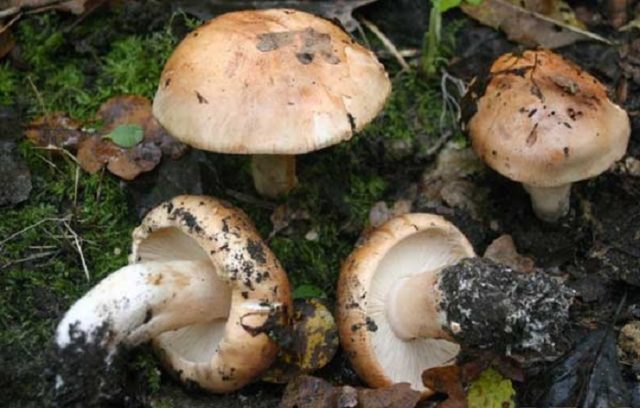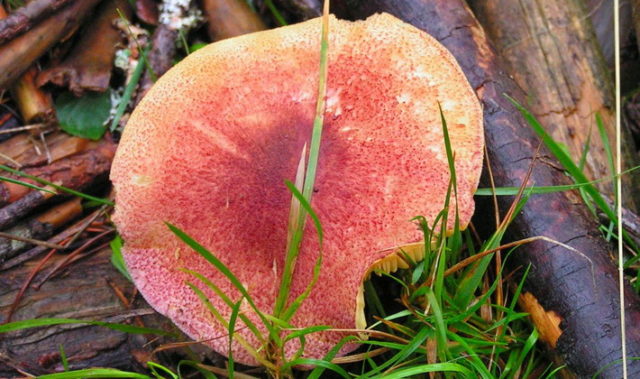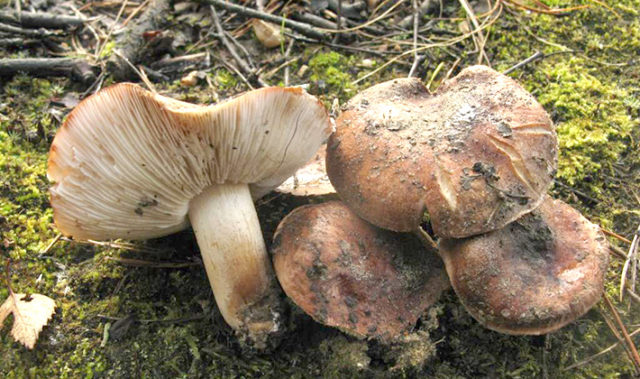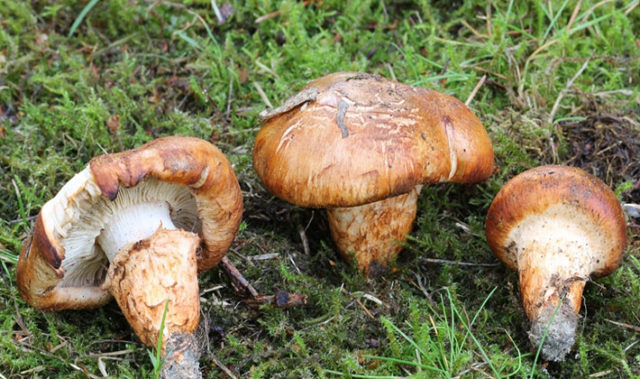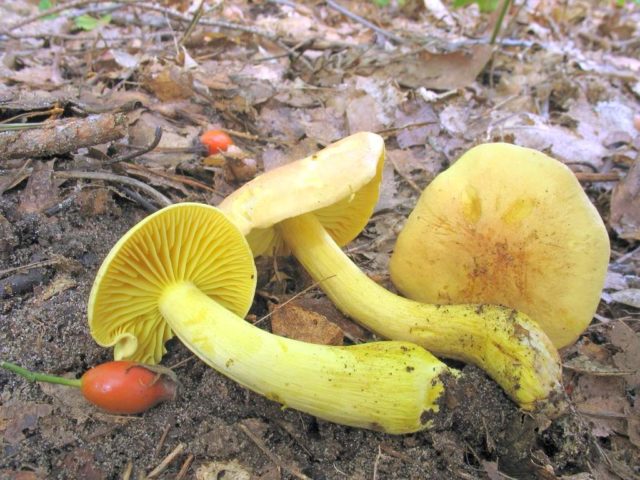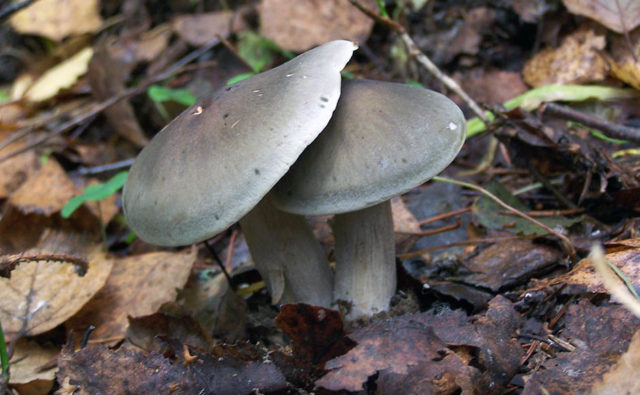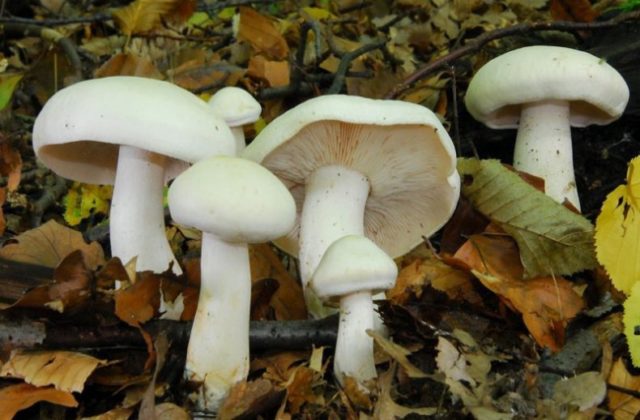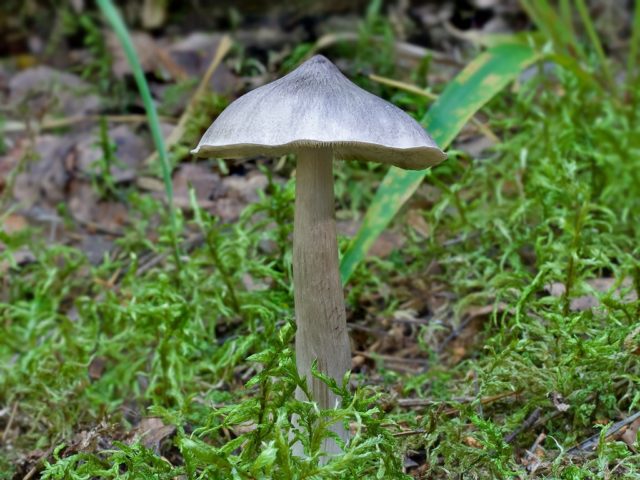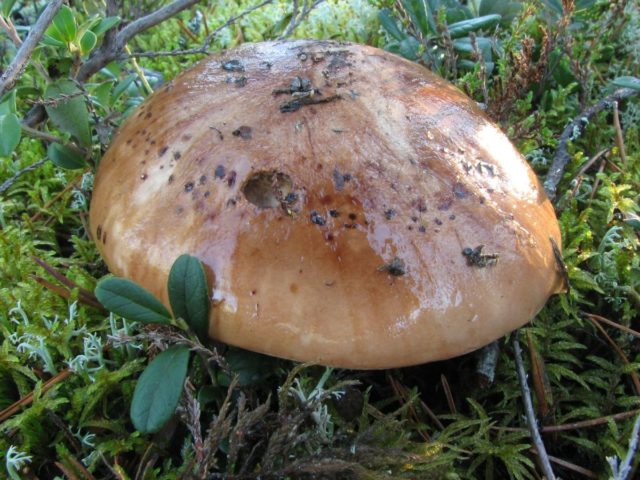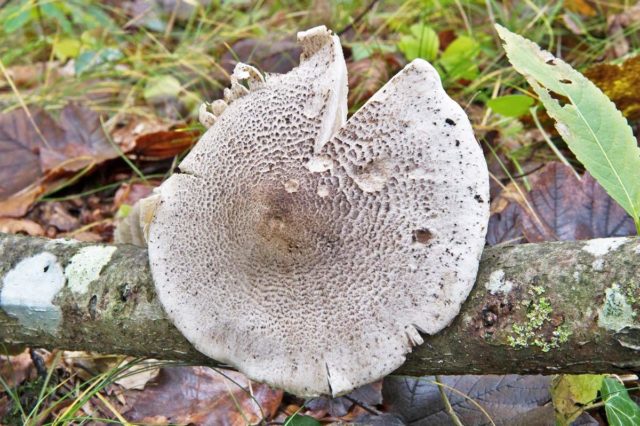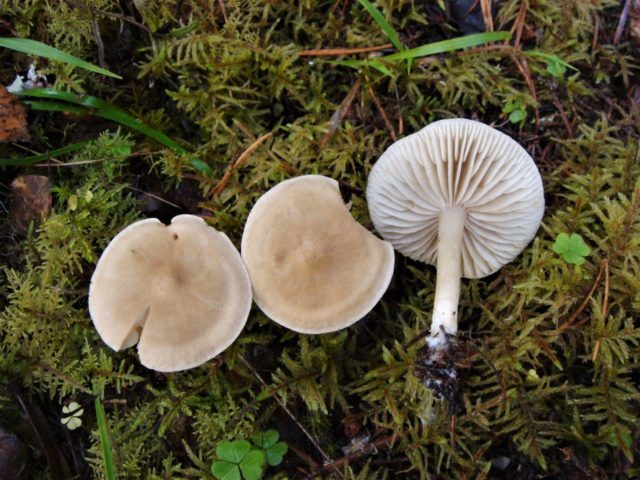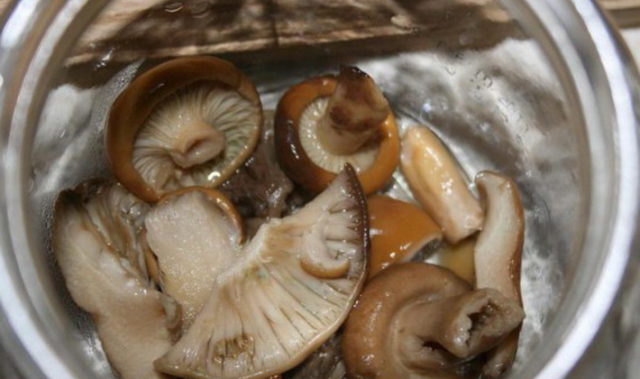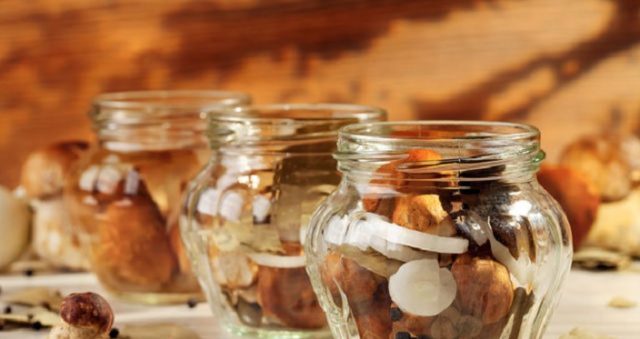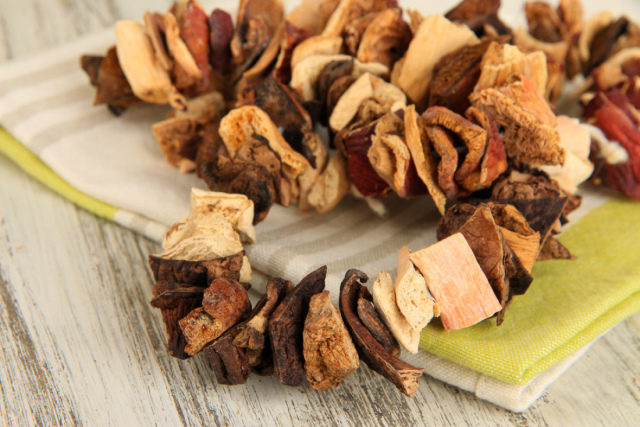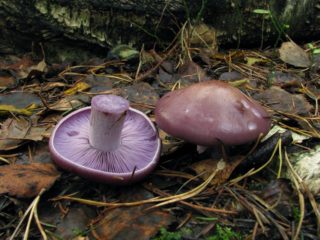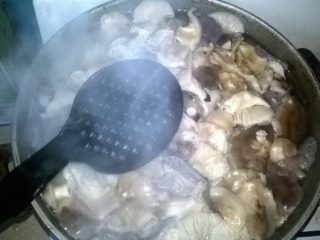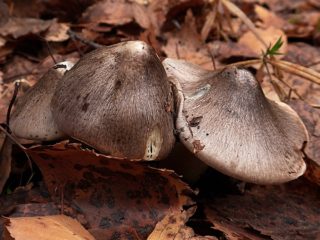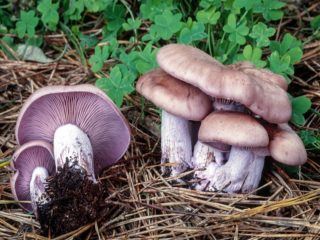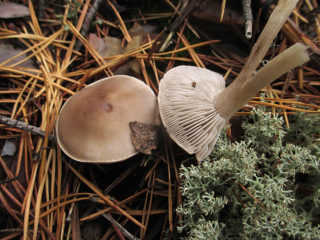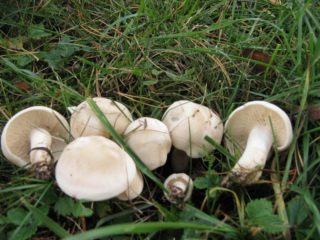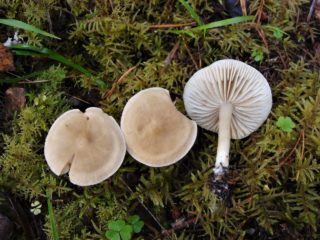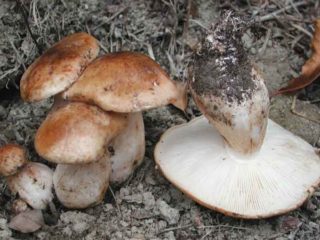Content
- 1 What does a row mushroom look like?
- 2 Where do the rows grow?
- 3 How mushrooms grow
- 4 When the rows grow
- 5 Types of rows
- 6 How to distinguish edible from poisonous rows
- 7 Taste qualities of mushrooms
- 8 Collection rules
- 9 How to cook row mushrooms
- 10 Symptoms and signs of poisoning
- 11 First aid for Ryadovka poisoning
- 12 Conclusion
Rowers (tricholomas) are medium-sized ground mushrooms that prefer coniferous surroundings and grow in groups. The unprepossessing appearance and specific smell scare away lovers of “quiet hunting”. Many species of the family are indeed not suitable for consumption. It is not easy to be able to distinguish between edible and poisonous row mushrooms. But it’s worth learning, because dishes made from triholome are delicious.
What does a row mushroom look like?
In total, approximately 100 varieties of rows are known, among which there are poisonous mushrooms. Therefore, you need to know what edible, conditionally edible and inedible specimens look like. A description of row mushrooms and photos will help with this - further in the text.
The mushroom body of the row consists of a cap and a stalk. Externally, representatives of the rowan family are distinguished by variability of characters.The caps of young specimens in various species have the shape of a ball, cone or bell. In an adult mushroom, the cap straightens as it grows. The diameter is from 3 to 20 cm. It has a noticeable but small tubercle in the middle, and the edges can be wavy, straight, tucked or everted.
The skin of the mushroom, depending on the species, is dry, velvety or smooth, slippery with mucus, pure white or all shades of yellow, green, red, brown. As it develops, the color also often changes.
Under the cap of the tricholoma there are spore-bearing plates, which, depending on the type, are thin, often located, or sparse, thick, fused with the stalk. The spores themselves are smooth, elongated, whitish or transparent, and the spore powder is either white or brown.
The stem of the rows can be completely bare, scaly or weakly fibrous. Color pinkish-brown. Some varieties have purple. The shape of the legs of mushrooms of this genus is varied: cylindrical, club-like, thickened at the cap or at the base. The remains of the blanket protecting the spore-bearing layer, if present, are in the form of a fibrous ring under the cap.
Where do the rows grow?
Rowlings grow in areas with a temperate climate. The greatest species diversity is observed in the southern regions of Russia.
More often, tricholomas choose pine as a mycorrhizal neighbor, a little less often other conifers, and very few species choose deciduous trees. The best type of soil for tricholomas is coniferous, low-fat calcareous or sandy soil. But mixed forest is also suitable for them.
How mushrooms grow
The way mushrooms grow in groups—in rows—received their name.Some varieties, as they grow, form colony rings—“witch circles.”
Mushroom companies can be numerous, occupying large forest areas. Small groups are more common. Some rare species grow alone.
When the rows grow
Almost all types of row mushrooms are autumn. Some of them appear as early as mid or late August. Individual specimens in spring - April, May. But mostly fruiting occurs from the beginning of September until the November frosts. There are varieties that grow in winter without fear of frost. The peak of ripening is observed after the air cools to +15°C, that is, in October. In this case, the optimal soil temperature should be about +20°C.
Crimean species bear fruit constantly, except in late winter, but the most “meaty” mushrooms are still obtained in the autumn.
Types of rows
There are 45 species of row trees growing in Russia. According to their edibility, representatives of the genus are divided into subgroups:
- edible;
- conditionally edible;
- inedible poisonous.
Edible
Many of the edible species are extremely tasty. Some edible row mushrooms with photos and descriptions are presented below.
- Gray row (Tricholoma portentosum) is a popular edible mushroom. The cap is light gray and fleshy (up to 12 cm). While the row is young, it has a cone-shaped appearance, but in older ones it is unevenly flat. The center of the cap is darker than the edges. The leg is gray or whitish. The pulp is slightly yellowish when cut. The aroma is weak, the taste is not strong.
- Lilac-legged rower (Lepista saeva, Blueleg) - belongs to the category of southern edible mushrooms. The cap (up to 15 cm) is yellowish-cream with a purple coating. The leg is low purple, less often light with purple veins.The pulp is dense, thick, very tasty. Fruiting is from April to October.
- May row (Calocybe gambosa) is a tasty edible mushroom. The hat in young specimens is hemispherical in shape, while in older specimens it is convex and spread out (up to 10 cm). From yellowish to white. The leg (up to 7 cm, 1-3 cm thick) expands near the ground. The pulp is snow-white, dense. It grows in the Central Asian steppes, China, and Mongolia, where it is also highly valued for its medicinal properties. Fruiting – May, June.
- Shod row (Tricholoma caligatum, Matsutake). Translated from Japanese, “matsutake” means “pine mushroom.” It has the smell of pine and the delicate taste inherent in noble edible mushrooms. The silky brown cap (from 6 to 20 cm) cracks in adult rows. The flesh is snow-white, the leg is strong, whitish on top and brownish at the base (5-20 cm and up to 2.5 cm thick), sometimes bending towards the ground.
Conditionally edible
Mushrooms of this group are often bitter. They are best eaten young.
- Row purple. The cap is up to 15 cm deep purple in color with light lilac flesh. In a young tricholoma it is shaped like a hemisphere, in an adult it is flat. The leg (up to 8 cm) is lighter than the cap and stiffer. The elastic flesh is very dense.
- Row earthy gray. A mushroom with a cone-shaped cap (up to 9 cm), growing, takes on a flat shape with a tubercle in the center. They are often called little mice. The silky skin is mouse-brown or the color of brickwork. The snow-white leg (up to 9 cm in height) of an aging mushroom becomes hollow and yellow near the ground. The elastic pulp has almost no taste, but has an unobtrusive powdery odor.
- Poplar row. Valued in the steppes, where there are always few mushrooms.This mushroom is short (up to 6 cm) with an uneven light brownish cap, the edge of which often cracks. The leg is cylindrical, up to 3 cm thick. The flesh is dense, white.
- Row yellow-red. The cap is from 7 to 15 cm, with a matte yellow-orange or yellow-red surface, on which there are small scales. The leg is cylindrical in shape from 5 to 10 cm, the same color as the cap, widened at the base.
- White-brown row. The cap is mucous, reddish-brown, flattened with a tubercle in the middle and wavy edges. There are noticeable darkened veins on the surface, and the edge is pale. The leg is reddish-brown, velvety with a white spot. The pulp is white with a characteristic floury smell.
- Row bandaged. The surface of the convex fibrous cap with a wavy edge is colored unevenly, which is confirmed by the presence of veins and spots on it of red, yellow, olive or brown. The plates under the cap are tangled and covered with dark spots. Before the fleecy ring on the leg, the skin is light beige, and after that it has dark rusty scales
- Row sulfur-yellow. This species is characterized by the poisonous yellow color of the cap and stem. The surface of the fruiting body has a velvety structure. The leg is thin. The pulp is also sulfur-colored with a sharp acetylene odor.
- Soap row. The coffee-milk spread cap has a dark center and a lighter, smooth edge. The leg, curved with a fibrous surface structure, is painted a tone lighter than the cap. The cut of the pulp turns red and emits a strong chemical smell of soap with fruity notes.
Inedible - poisonous
There are noticeably fewer varieties of unedible rows than edible ones.Among them there are some particularly poisonous species that you need to be aware of. The most dangerous among the poisonous ones are those that can be easily confused with edible mushrooms.
- White row. It is characterized by the white color of the fruiting body. Less common are slightly yellowish white rows. The outstretched cap has a smooth, velvety surface. The cylindrical leg is slightly curved. A distinctive feature of the mushroom is the pulp with a pungent radish odor, turning pink at the break.
- Pointed row. The cap has a characteristic cone shape with a pointed tubercle in the middle. Its skin is dry, dark gray, the edge is cracked. The leg is light gray, thin, slightly curved.
- Spotted rower. The prostrate, mucus-covered cap has a small depression in the middle and is colored dirty brown. Dark brown spots and veins clearly appear on its surface. The stem, wide at the base, matches the color of the cap below, and is white on top.
- Tiger row. A distinctive feature is the characteristic dark gray spots on the light gray surface of the outstretched cap. The stem, thickened at the bottom, is white.
How to distinguish edible from poisonous rows
Each type of poisonous row has distinctive external features. You need to know these signs and be able to identify them visually.
Poisonous mushrooms have one thing in common. The pulp of inedible specimens changes color when exposed to air, that is, when broken, it acquires a different color.
Also, inedible mushrooms have a pungent chemical smell. But you shouldn’t focus on the aroma, since some conditionally edible tricholomas have a specific smell.
Taste qualities of mushrooms
Many varieties have a specific, mealy odor and taste, characteristic only of these mushrooms. Almost all rows are bitter to varying degrees. Many edible species boast excellent taste and do not have a bitter aftertaste.
Collection rules
It is better to collect autumn edible row mushrooms in the company of more experienced mushroom pickers, following the collection rules:
- You should not take mushrooms that you doubt are edible;
- do not take damaged or old copies;
- move slowly, using a stick to look for mushrooms;
- use breathable wicker baskets and baskets as containers, but not plastic bags and buckets;
- wear comfortable shoes and closed clothing in the forest;
- Place tubular mushrooms with their stems down, and immediately cut off the cap of large ones and place them separately;
- Clean off soil and dirt immediately and do not leave it on the mushrooms;
- constantly monitor your movements, guided by the sun and compass, so as not to get lost in the forest.
If there has been a long period without rain, then going for mushrooms is useless. Only after a good rain in warm weather will “silent hunting” be productive.
How to cook row mushrooms
Preparing edible rows begins by removing dirt and debris using paper towels. Then you need to get rid of the bitterness. To do this, before heat treatment, they are soaked, periodically changing the water for 12 hours.
Canning of rows is carried out by salting or pickling. Before salting, the mushrooms are boiled. For 1 kg of boiled mushrooms take 4 finely chopped horseradish leaves, 5 garlic cloves cut into slices, 10 pcs. peppercorns and 2 tbsp. salt. Salted mushrooms and spices are placed in layers in a barrel or other container. The first and last layers should be spices.Keep under pressure for 3 days at room temperature, and then put in a cool place.
Pickled row mushrooms are sealed for the winter in sterile jars.
There are several ways to dry rows:
- hang mushrooms strung on strings around a room with dry air;
- in an electric dryer, microwave, oven, oven;
- in the sun, spread out in a thin layer.
Drying rules:
- do not dry in damp areas,
- use only clean, mold-free mushrooms,
- do not dry at temperatures above 40°C,
Symptoms and signs of poisoning
The first signs of poisoning appear within 1-3 hours after consumption. The symptoms are as follows:
- profuse drooling;
- exhaustion;
- nausea and vomiting;
- diarrhea;
- sharp and severe stomach pain;
- headache;
- increased sweating;
- dizziness;
- temperature increase;
- tinnitus;
- drowsiness;
- in severe cases - disorientation and loss of consciousness.
First aid for Ryadovka poisoning
Properly provided first aid can save a person poisoned by mushrooms or reduce the consequences of intoxication. In case of poisoning, the following procedure must be followed:
- Rinse the stomach with plenty of water. It is better to use a weak manganese solution when the manganese particles are completely dissolved. The patient should drink in small sips at short intervals. After this, induce vomiting by pressing on the root of the tongue. Repeat the procedure at least four times.If there is no potassium permanganate, then use a warm solution of table salt (0.5 tsp per 1 liter of water).
- After gastric lavage, give the patient a double dose of one of the adsorbent drugs: Eneterosgel, Polysorb, Filtrum or activated carbon at the rate of 1 tablet per 10 kg of person’s weight.
- Allow the intestines to cleanse. If there is no diarrhea, then take a laxative.
- Place the patient in bed, cover with a blanket, and place heating pads on the extremities.
- Often give the poisoned person strong, sweet black tea or chamomile infusion.
Conclusion
To be able to distinguish between edible and poisonous row mushrooms, only theoretical knowledge about the various species characteristics is not enough. It is advisable for a more experienced mushroom picker to show clearly what edible and inedible specimens are. You need to be able to provide first aid in case of poisoning in order to help yourself and others avoid serious consequences in case of intoxication.

